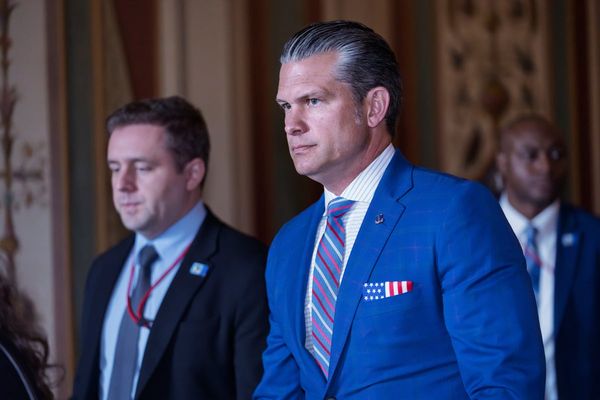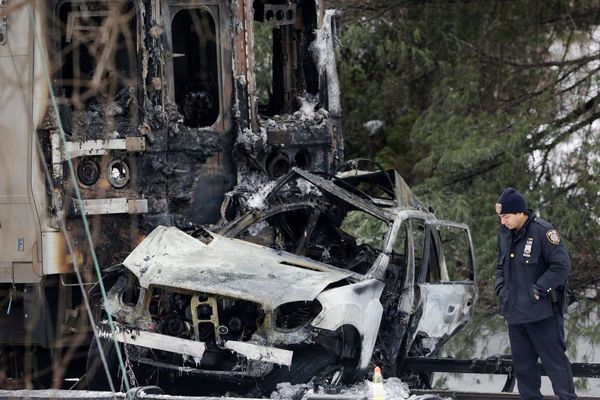Equine veterinarian Dr. Kate Hodson of Hebron, Indiana, never knows how her day will unfold.
Her day starts around 5 a.m. tending to her own animals, including a pasture full of horses and a couple dozen chickens. Then it’s time to take care of the many clients and their equines who call her their doctor.
Unlike small animal veterinarians who mostly work in brick-and-mortar facilities, Hodson’s office is mobile. She packs up her Chevy truck outfitted with all the medical equipment she may need to care for her patients and hits the road each morning. Hodson logs hundreds of miles a week making regular appointments. Emergency calls only add more to the log.
Hodson said she can see clients in her own barn, but traveling to her clients is easier than having her clients cart their equine to her for treatment. Trailering a horse, especially an older one, can be traumatic for the animal.
Her client roster may be long, but Hodson said he has relationships with all of her patients.
“I think I remember every one of my horse’s names,” Hodson said.
An equine vet sees on average 300 to 400 horses a year. Her client roster totals more than 1,000. The workload leads to struggles with work-life balance and drives many from the profession. In a 2014 survey by the American Association of Equine Practitioners, members ranked work/life balance as their No. 1 concern followed closely by physical health and mental well-being.
The Centers for Disease Control and Prevention also found in a 2014 study that U.S. veterinarians are more likely to suffer from psychiatric disorders, experience bouts of depression and have suicidal thoughts when compared with the U.S. adult population, according to the AAEP. The data suggests that nearly one in 10 U.S. veterinarians might experience psychological distress and more than one in six might have contemplated suicide since graduation.
Dr. Sarah Waxman, clinical assistant professor in the college of clinical services at the Purdue University School of Veterinary Medicine in West Lafayette, said it can be hard attracting young people to the field because of the challenges.
Young veterinary students often learn about the money that can be made in a small animal clinic where doctors can move from room to room seeing multiple patients every hour, compared to a large animal vet who must travel and makes far less, which dissuades many from the discipline.
“I can tell you for certain the starting salaries for small animal veterinarians coming out of vet school are substantially higher than equine and mixed animal veterinarians who have been out of school for many years. It’s very disheartening,” Waxman said.
“You have to be extremely passionate about wanting to be an equine veterinarian,” she said.
She worries about the future as a shortage of veterinarians continues and fewer young people look to the equine discipline.
“Horse owners are not going to have anybody left or very few people left to serve them,” Waxman said.
Delays in getting care may mean horse owners have to transport their animals to hospitals like Purdue, equipped to care for large animals, or delay getting care, possibly negatively impacting health outcomes for the horses.
“It’s going to be a problem for everybody,” Waxman said.
Hodson’s professional feed is dotted with posts on boundaries, with strong reminders about what constitutes an emergency for after-hours calls. Her phone is never turned off and she does not use an answering service because of the cost and inconvenience. True emergencies often need immediate response, making the service an unwanted extra step. Still, some horse owners call at all hours for nonemergency needs, a vexing problem for Hodson and veterinarians like her.
Her social media feed also shares before and after photos of some of her emergency patients, a fascinating array of wounds horses manage to inflict upon themselves in pastures, barns and near fences.
“Horses are extremely good at injuring themselves,” Hodson said.
She also shares industry statistics, student loan debt stories of fellow equine vets, their struggles and triumphs, and occasionally condolences about their suicides.
Michael San Filippo, media relations manager for the American Veterinary Association, said that while the rate of suicide among veterinarians is higher than for the general population, there are other professions that also have a higher rate than the general population, and many that have a higher rate than veterinarians.
“Suicide prevention experts continue to caution that repeatedly stating veterinarians are uniquely impacted by suicide compared to others who also experience mental health concerns may inadvertently contribute to fewer help-seeking behaviors and less hope,” San Filippo said.
Suicide prevention researchers and experts advise that suicide is multifaceted and complex, and friends, family members and colleagues are often unaware of the actual factors that may have played the greatest role, he continued.
“Factors often cited — debt, long/irregular hours, compassion fatigue — aren’t unique to veterinary medicine, and we don’t have any evidence that these often-cited factors are a direct cause of suicide,” San Filippo said, adding in addition, there is no evidence to show that things that are unique to veterinary medicine cause suicide.
“Whatever your profession, you may at times experience feelings of despair, hopelessness, and powerlessness,” he said.
Hodson said she loves what she does, despite the challenges and remains hopeful things will improve with more discussion. She would love to share her passion for the profession and draw more young people in but wants those newcomers to walk in with their eyes open, aware of the challenges. The days are long and hard. The job is physically demanding.
“It’s not for everyone,” Hodson said.
Scars from errant hoofs riddle her body, reminders of the sheer power of the animals in her care. A grown horse can weigh between 1,500 and 2,000 pounds. Even the best horses can be unpredictable, she said. In September Hodson was sidelined for weeks after her right elbow was severely dislocated by a horse kick. She may never regain full range of motion.
Still, she loves her job and the animals in her care. At a recent horse dental day Hodson oversaw the care of more than 30 horses at her barn and two other locations. While the volume of horses seen that day was more than on a day as a traveling doctor, she considers the clinic days as “breaks” from her normally hectic routine.
Many days are filled with emergencies, forcing Hodson to pivot and head off to a different farm to help an equine in distress. Sometimes she is able to relieve the choke, an intestinal blockage that can be caused by overeating or eating the wrong type of grain, or stitch up a gaping wound from a freak interaction with a fence.
Other times, no matter how hard she tries, her efforts wind up futile. It is at those times Hodson said she does her best to make sure the horse is comfortable as its family members gather to say their goodbyes, shedding tears along with them.
“They really are part of the family. Saying goodbye is important,” Hodson said. Horses are long-lived, with life spans averaging 25 to 30 years.
Kaitlyn Steele of Valparaiso, a second-year student at Purdue’s School of Veterinary Medicine, said she has heard the statistics and the warnings that come along with them but cannot imagine doing anything else.
“That’s definitely a big topic of conversation,” Steele said. Equine veterinarians who lecture at the university or who are at career fairs talk about the challenging work life balance. The discourse gives her hope the industry may be trying to change.
Like so many in the field, Steele’s love of horses started young. She did not live on a farm or in a family that owned horses, but that did not deter her enthusiasm. She took riding lessons once a week for much of her childhood.
The case of 2006 Kentucky Derby winner Barbaro piqued Steele’s interest in becoming a veterinarian when she was a child. Barbaro went on to break his leg in the Preakness Stakes, two weeks after his Derby win. That injury eventually cost the horse his life, which she struggled to understand.
“It started my journey in that regard,” Steele said. “An equine vet is always what I wanted to do as a kid,” Steele said. “I’d rather have the work I’m doing being something I genuinely love, even though I’ll be doing so much more, rather than doing something I’m just OK with.”
Industry challenges aside, those in equine practice would not change professions. They pursued careers in the field because of their passion for horses.
“I’m in this profession because I absolutely love it,” Waxman said.







